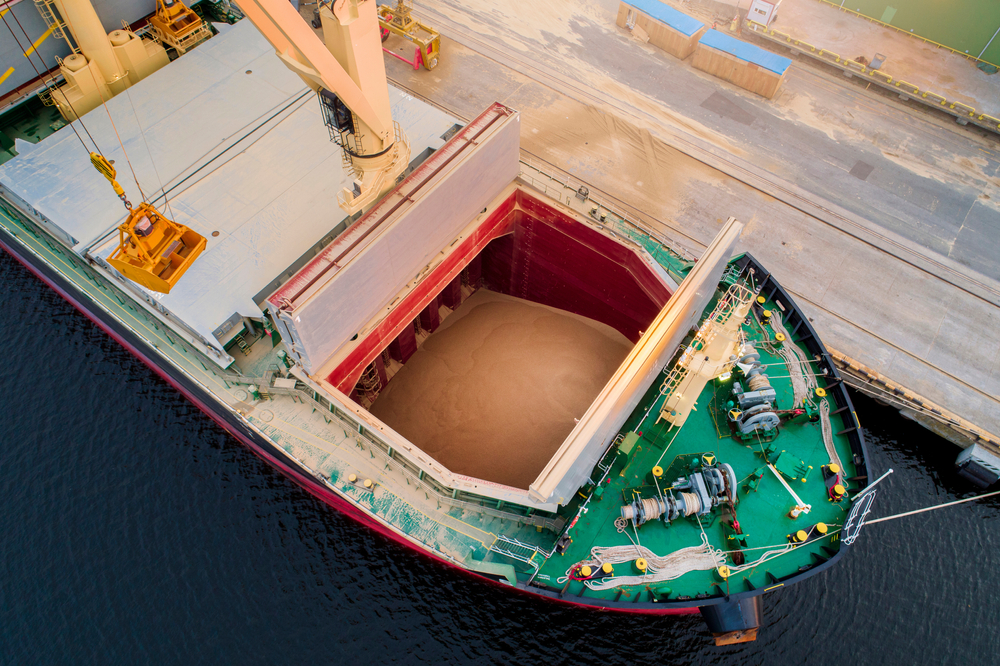Record cereal exports in 2022 and 2023.
From January last year to July this year. Poland exported a record amount of cereals – 16.8 million tonnes. In the first seven months of this year alone, 7.7 million tonnes of grain were exported from the country, 57 per cent more than a year ago, deputy head of the National Agricultural Fund (KOWR) Marcin Wroński told PAP.
– In the period from January 2022 to July 2023 , i.e. almost from the moment of Russia’s aggression against Ukraine, Poland exported a record 16.8 million tonnes of cereal grain, including 9.1 million tonnes in 2022 and 7.7 million tonnes by July 2023. At the same time, we have recorded increased grain imports into the country, mainly from Ukraine, but the balance in grain trade is positive, with exports being several times greater than imports, Wroński stressed.
As a result of the disruption of grain supply chains caused by the outbreak of war, grain prices on the global market in 2022 increased significantly, he added, which led to a decrease in demand for grain on international markets. And this, in turn, has resulted in stiffer competition on the global market and a surplus of cereals, including at home. He added that the influx of grain from Ukraine into Poland was also not insignificant.
These factors led to measures aimed at improving logistics and transport options, he pointed out. He stressed that this year’s cereal subsidies were also important, which encouraged farmers to sell their grain, allowing them to raise funds for, among other things, further agricultural production. In this situation, the supply of cereals for purchase increased, which made it possible to increase sales abroad. At the same time, exports were stimulated by the exchange rate of the zloty against the euro and the US dollar, which was favourable for exporters,” explained Wroński.
According to the National Agricultural Fund data, 7.7 million tonnes of cereal grain were exported from our country in the seven months of 2023, 57 per cent more than in the same period last year, of which 53 per cent was wheat (4.1 million tonnes) and 35 per cent corn (2.7 million tonnes). Wheat export volumes were more than two times higher than in the same period last year, while maize exports were 15 per cent higher.
In July 2023 alone, 1.1 million tonnes of cereal grain were exported from Poland. This was 17 per cent more than a year ago. Wheat export volume amounted to 645,000 tonnes, up 35.5 per cent, and barley exports 115,000 tonnes, up 41 per cent. Maize exports, on the other hand, decreased by 18 per cent, to 256,000 tonnes. – calculated the deputy head of the National Agricultural Fund.
According to the National Agricultural Fund, in the seven-month period of 2023, exporters placed grain mainly on the EU market, where 60 per cent of the grain was sold – mainly to Germany (2.6 million tonnes) and the Netherlands (nearly 950 thousand tonnes). Non-EU countries received 40 per cent of the exported grain, the most to Nigeria (850,000 tonnes) and South Africa (562,000 tonnes).
Wroński pointed out that most of the grain is exported by sea through the ports of Gdańsk, Gdynia and Świnoujście. According to the available data for the eight months of this year, 5.4 million tonnes of cereals left Poland via this route, which means that exports were over 77% higher than in the same period last year, when they amounted to 3 million tonnes.
In January-August 2023, primarily wheat and maize were exported by sea. 3.75 million tonnes of wheat (compared to 1.7 million tonnes a year ago) and nearly 1.5 million tonnes of maize (compared to 1.25 million tonnes in the same period a year earlier) were exported through seaports. Also, 74,000 tonnes of barley, 34,000 tonnes of rye, 21,000 tonnes of triticale and 16,000 tonnes of oats were exported via the country’s Baltic Sea ports, the deputy director of the National Agricultural Property Fund said.
According to Wroński, in the following months, the volume of cereal exports from Poland may be influenced by relatively large exports of cereals from Russia and Ukraine, at competitive prices. Additionally, the ongoing wheat harvest in the USA and Canada and maize harvest in Brazil and the USA (i.e. in significant producers and exporters of these cereals) contribute to an increase in the supply of grain on the world market, which will make exports more competitive, the deputy director of the National Agricultural Fund for Agriculture pointed out.
Source: PortalMorski.pl




